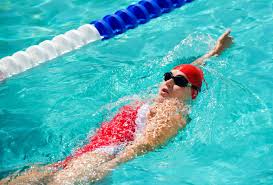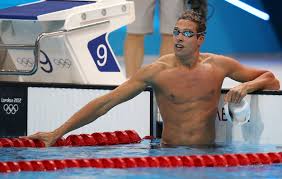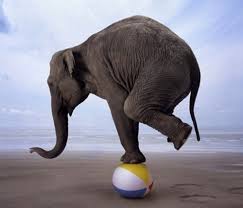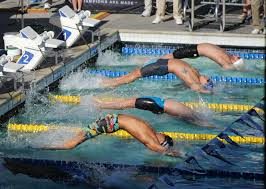Why do you need to do more backstroke? Well, backstroke is one of the most under-appreciated swimming strokes. Most people spend their training sessions working with freestyle because it is the preferred stroke in most races. Freestyle swimming is a good stroke to use to build strength and endurance in the pool. If you specialize in a stroke, like backstroke, breaststroke, or butterfly, you will work on that stroke during your training. But most of your work will still be in freestyle. Interestingly, it is a good idea for every swimmer to do more backstroke work in every training session – even if you never swim backstroke in competitive events.
Avoid Repetitive Use Injuries
One of the most common problems that athletes experience is repetitive use injuries. These happen when athletes only work on one skill. So, athletes who play baseball often develop overuse injuries to their shoulders and elbows because they only throw with one hand. Swimmers who only swim with their faces down in the water can actually develop overuse injuries, too.
Use your Complementary Muscles
Doing more backstroke can take care of overuse issues.  Because backstroke uses muscles in a different way that freestyle does, overuse gets reversed. When people swim backstroke, the chest muscles get to open up as the back does more work. During backstroke, the shoulders end up in a helpful position for improving posture – the shoulders are back and the belly is engaged. Doing backstroke on a regular basis can also reverse the pain that can develop in the neck and shoulders from arching over a computer screen.
Because backstroke uses muscles in a different way that freestyle does, overuse gets reversed. When people swim backstroke, the chest muscles get to open up as the back does more work. During backstroke, the shoulders end up in a helpful position for improving posture – the shoulders are back and the belly is engaged. Doing backstroke on a regular basis can also reverse the pain that can develop in the neck and shoulders from arching over a computer screen.
Strengthening the Core
 Another benefit of swimming backstroke regularly is the work it does on the core. The slight hip rotation helps to strengthen the core in a way the other strokes do not. The kicks also help with the core because they activate small muscles in the lower back. You might start to notice your oblique muscles getting stronger as you continue to practice this stroke.
Another benefit of swimming backstroke regularly is the work it does on the core. The slight hip rotation helps to strengthen the core in a way the other strokes do not. The kicks also help with the core because they activate small muscles in the lower back. You might start to notice your oblique muscles getting stronger as you continue to practice this stroke.
Use with Running and High Impact Sports
Cross-training is another way to avoid overuse injuries. For people who do other athletic activities that involve high-impact, swimming will help reduce the negative effects that come from pounding hard into the ground. Runners, especially, can benefit from any type of swimming, but backstroke is the most therapeutic. Swimming backstroke gives the feet a break while focusing on the glutes and legs. The water provides resistance and lets the body heal from all of that impact. Because it is done in such an unconventional way (there are very few exercises that are performed on the back), it is the perfect cross-training option for nearly every athlete.
Build Balance
Balance is the key to success in nearly every exercise routine. No one wants to suffer from overuse pains. Since most swimmers do spend the majority of their time facing down in the pool, doing backstroke is about the only complementary activity that can help instead of hurt them.  Of course, swimmers can add weightlifting and run to their cross-training plan, but backstroke is the only activity that can be done with little-to-no risk of further injury. Mixing up your laps can actually improve your dominant stroke because you work more muscles – especially opposite muscles. If you are unsure of how to add backstroke, try using it as a cool downstroke. Take a slow and steady, so you can really focus on the muscle activity during the stroke.
Of course, swimmers can add weightlifting and run to their cross-training plan, but backstroke is the only activity that can be done with little-to-no risk of further injury. Mixing up your laps can actually improve your dominant stroke because you work more muscles – especially opposite muscles. If you are unsure of how to add backstroke, try using it as a cool downstroke. Take a slow and steady, so you can really focus on the muscle activity during the stroke.
Develop Different Muscles
You will also notice that backstroke work helps you in other non-swimming exercises. Since many competitive swimmers spend time in the weight room, they will see the benefits of backstroke on their upper body. It’s one of the few strokes where the arm can fully extend. This helps build strength in the upper body and the bicep muscles. You will also see the triceps get stronger, too. You will have more flexibility in the weight room and in your neck and spine.
